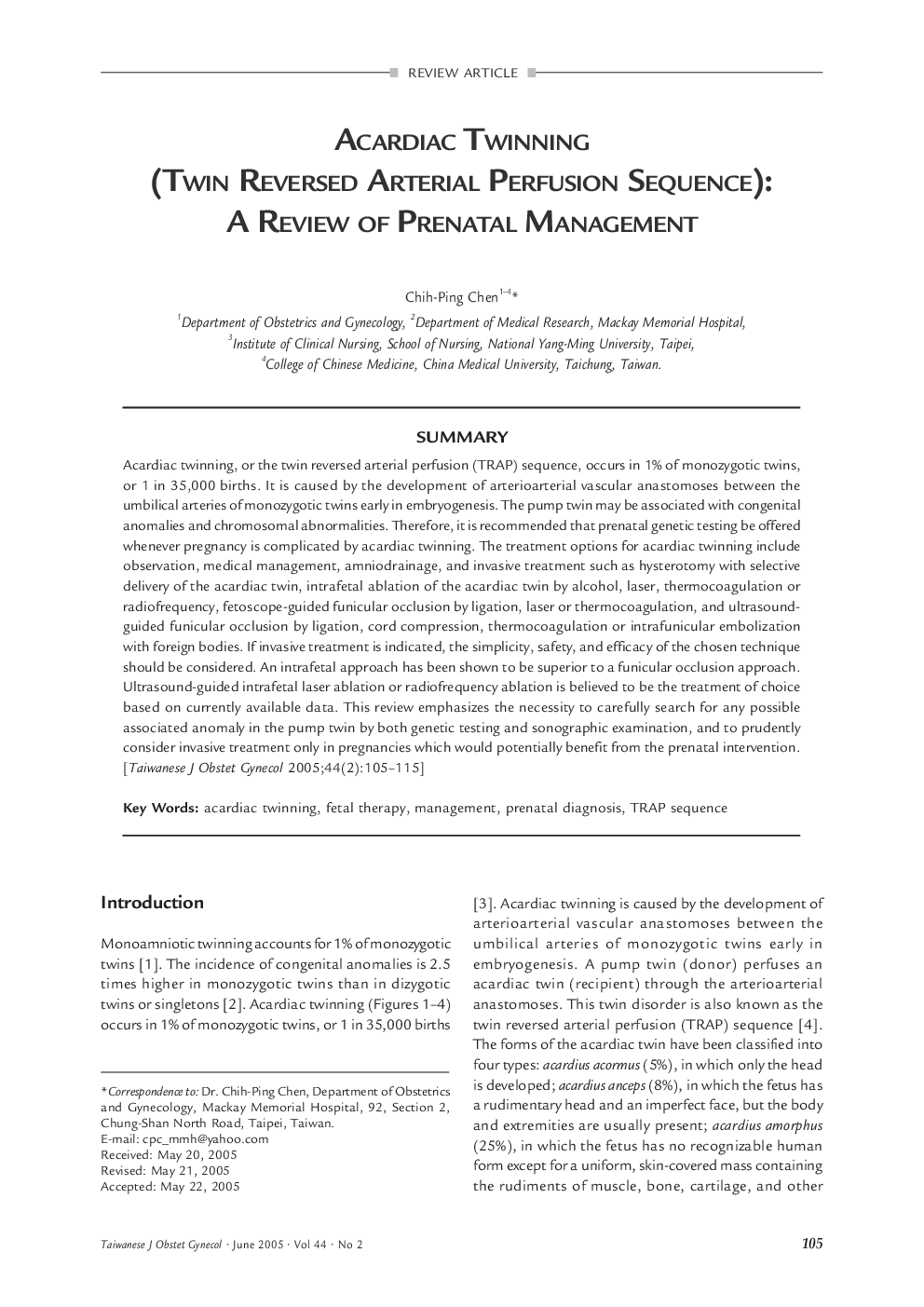| Article ID | Journal | Published Year | Pages | File Type |
|---|---|---|---|---|
| 10070321 | Taiwanese Journal of Obstetrics and Gynecology | 2005 | 11 Pages |
Abstract
Acardiac twinning, or the twin reversed arterial perfusion (TRAP) sequence, occurs in 1% of monozygotic twins, or 1 in 35,000 births. It is caused by the development of arterioarterial vascular anastomoses between the umbilical arteries of monozygotic twins early in embryogenesis. The pump twin may be associated with congenital anomalies and chromosomal abnormalities. Therefore, it is recommended that prenatal genetic testing be offered whenever pregnancy is complicated by acardiac twinning. The treatment options for acardiac twinning include observation, medical management, amniodrainage, and invasive treatment such as hysterotomy with selective delivery of the acardiac twin, intrafetal ablation of the acardiac twin by alcohol, laser, thermocoagulation or radiofrequency, fetoscope-guided funicular occlusion by ligation, laser or thermocoagulation, and ultrasound-guided funicular occlusion by ligation, cord compression, thermocoagulation or intrafunicular embolization with foreign bodies. If invasive treatment is indicated, the simplicity, safety, and efficacy of the chosen technique should be considered. An intrafetal approach has been shown to be superior to a funicular occlusion approach. Ultrasound-guided intrafetal laser ablation or radiofrequency ablation is believed to be the treatment of choice based on currently available data. This review emphasizes the necessity to carefully search for any possible associated anomaly in the pump twin by both genetic testing and sonographic examination, and to prudently consider invasive treatment only in pregnancies which would potentially benefit from the prenatal intervention.
Related Topics
Health Sciences
Medicine and Dentistry
Obstetrics, Gynecology and Women's Health
Authors
Chih-Ping Chen,
